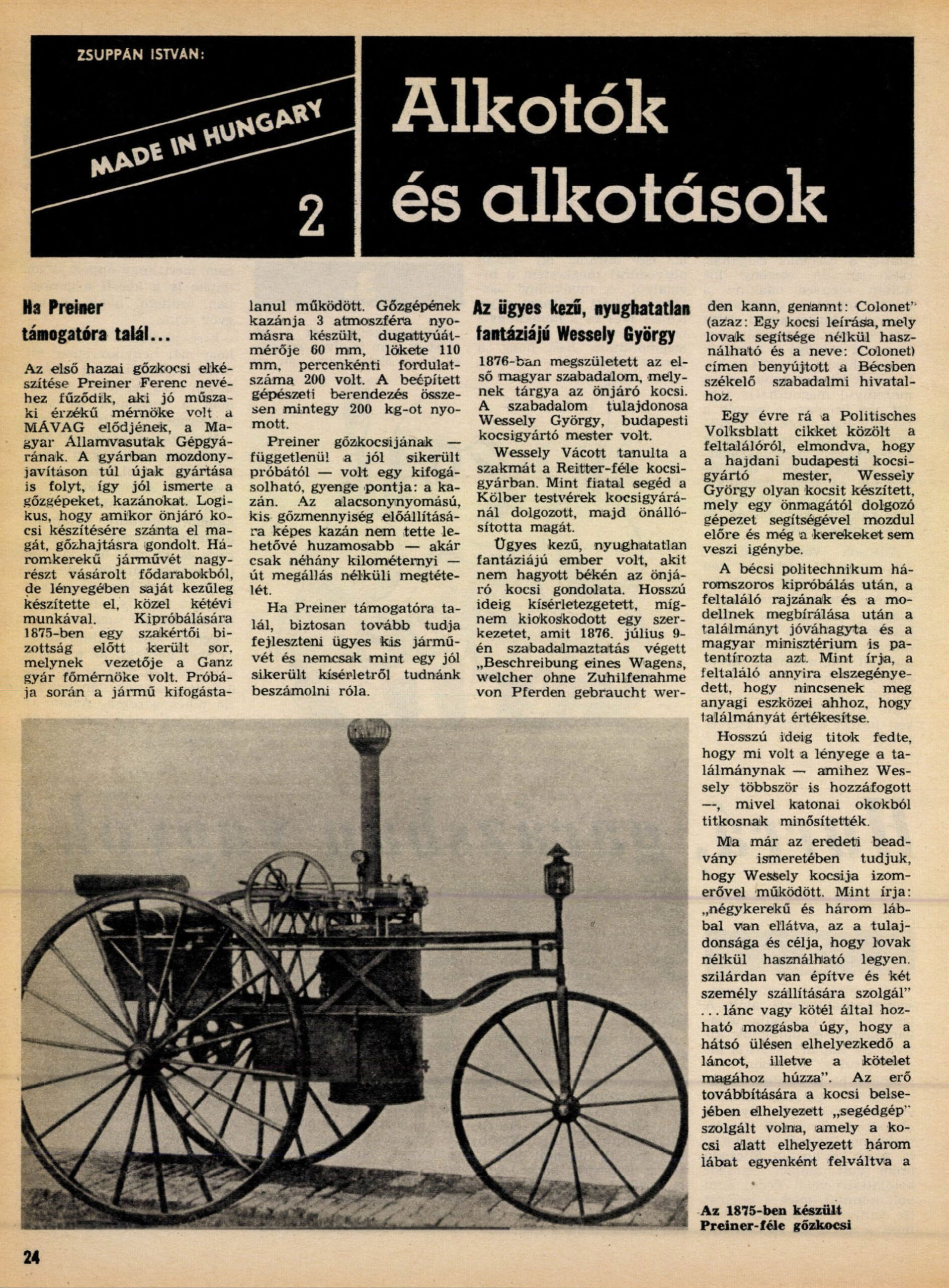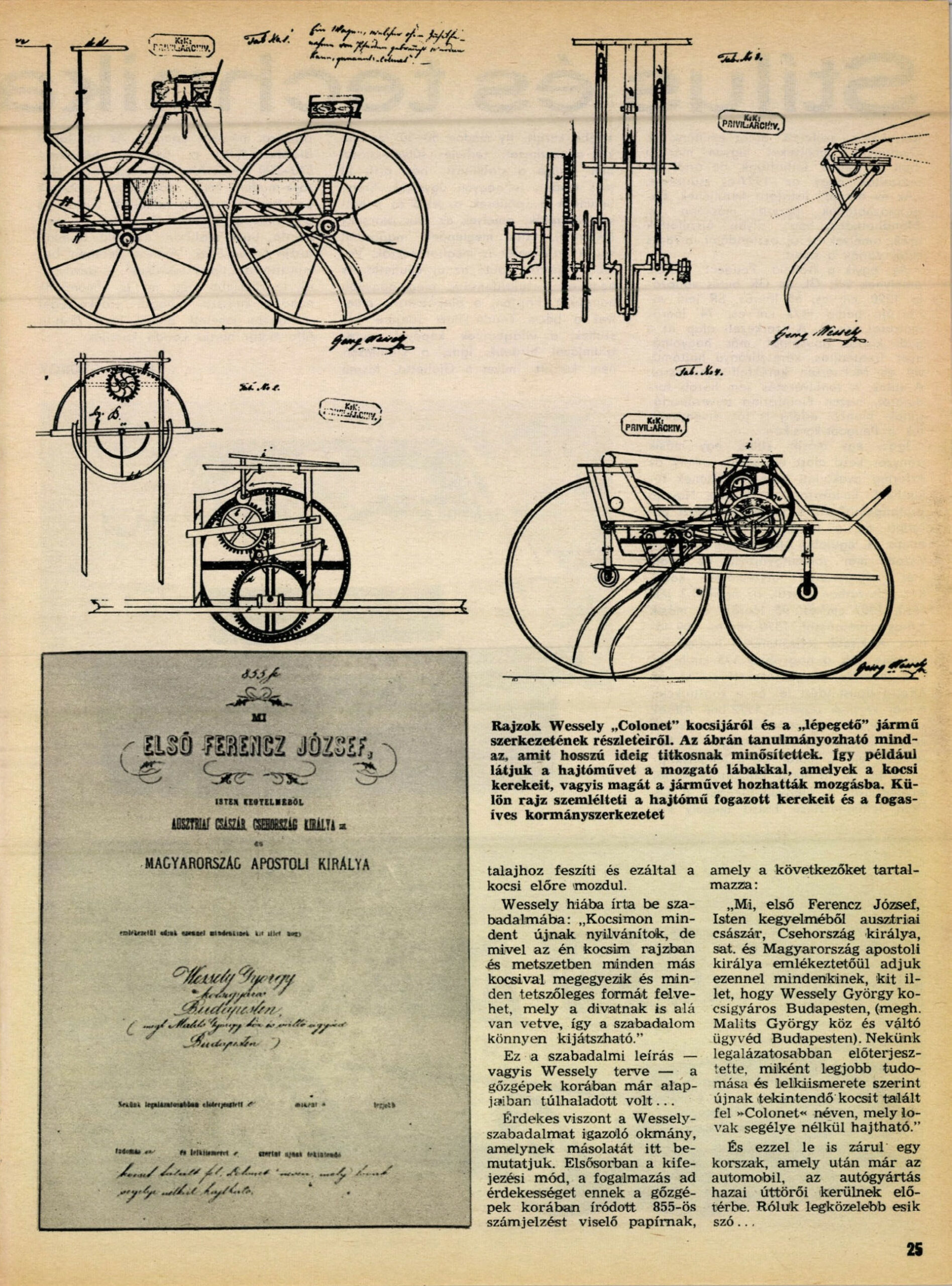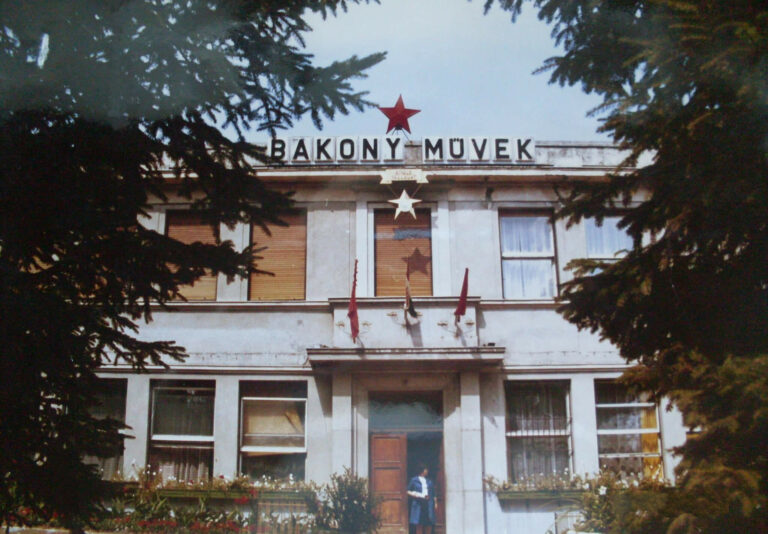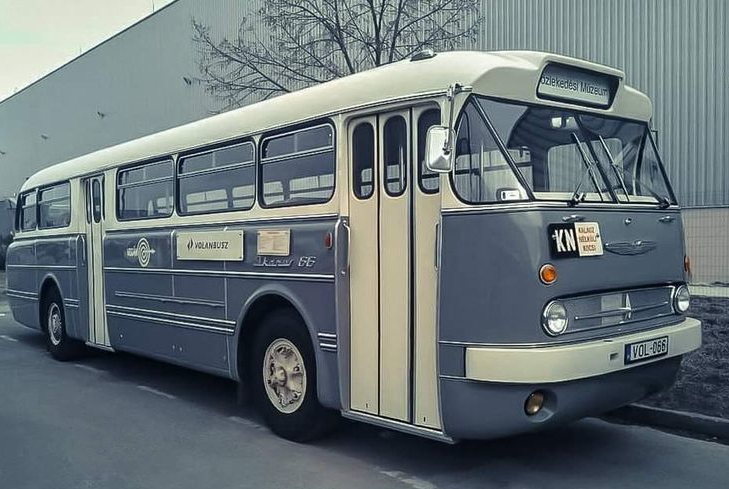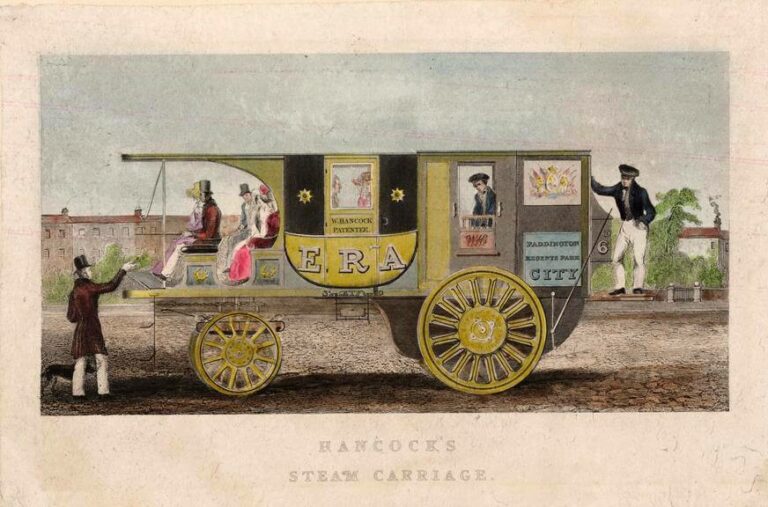1978 - Made in Hungary 2.
Creators and works
1978-in the Car Engine in a series of twenty-four articles, he undertook nothing less than to present the - then - 150-year history of motor vehicle production in Hungary. The articles were written with 'completeness' and a textbook-like thoroughness that seems to have disappeared by now István Zsuppán from the pen. In all cases, the texts are presented in full text, with the images adapted to the needs of today's readers. You will find a gallery of images at the end of each post with the original, easy-to-read pages of the articles.
Part one of the article series here available at.
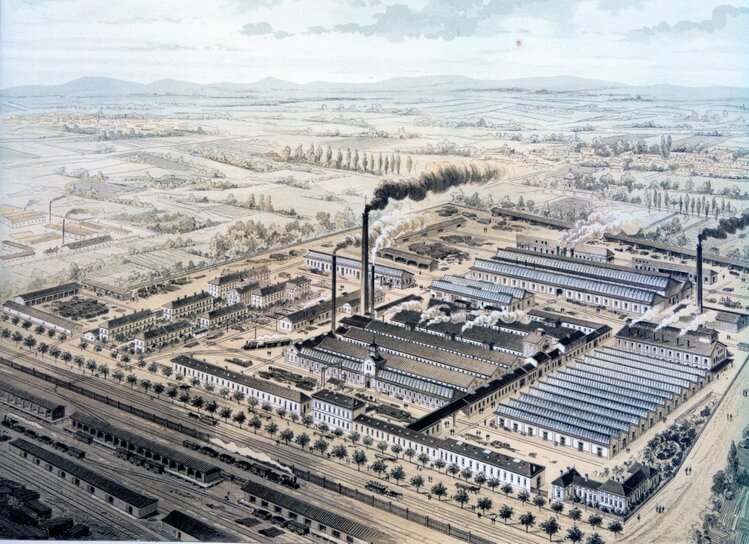
View of the Machine Works of the Hungarian Royal State Railways from 1886 - Image source: mblog.hu
Here is the second part of the series, published in the second half of January 1978:
♠
If Preiner finds a supporter...
The first domestic steam carriage was built by Ferenc Preiner, a technically astute engineer at MÁVAG's predecessor, the Hungarian State Railways' Machine Works. In addition to repairing locomotives, the factory also produced new ones, so he was well acquainted with steam engines and boilers. It is logical that when he set out to build a self-propelled carriage, he thought of steam propulsion. He built his three-wheeled vehicle largely from bought-in bits and pieces, but essentially with his own hands, with nearly two years' work. It was put to the test in 1875 before a committee of experts headed by the chief engineer of the Ganz factory. During the test, the vehicle performed flawlessly. Its steam engine boiler was designed for a pressure of 3 atmospheres, with a piston diameter of 60 mm, a stroke of 110 mm and a speed of 200 revolutions per minute. The total installed mechanical equipment weighed about 200 kg.
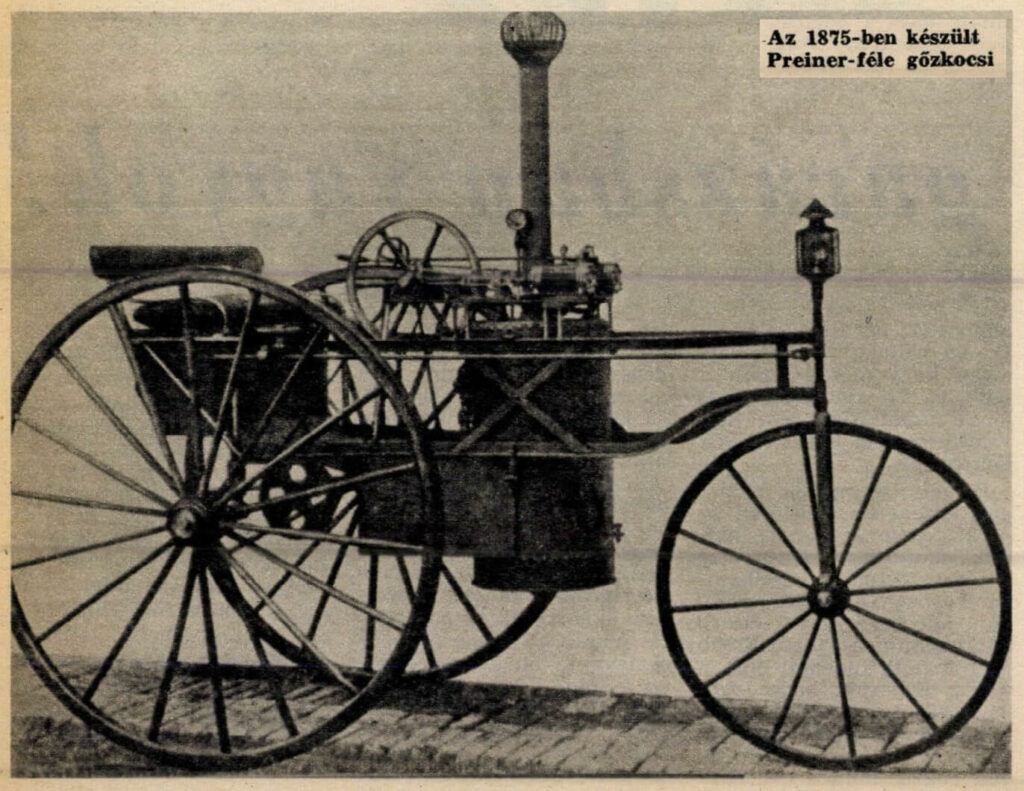
Preiner's steam car - regardless of the successful test - had one flaw: the boiler. The low-pressure boiler, capable of producing a small amount of steam, did not allow the car to travel for long distances - even a few kilometres - without stopping.
If Preiner can find a sponsor, he can certainly develop his clever little vehicle further and not only report it as a successful experiment.
The deft hand and restless imagination of György Wessely
In 1876, the first Hungarian patent was granted for the self-propelled carriage. The owner of the patent was György Wessely, a master carriage manufacturer from Budapest.
Wessely learned his trade in Vác in the Reitter carriage factory. As a young assistant he worked at the Kölber brothers' carriage factory, then became self-employed.
He was a man with a deft hand and a restless imagination, who was not at peace with the idea of a self-driving car. He experimented for a long time until he came up with a device, which he submitted to the patent office in Vienna on 9 July 1876 under the title 'Beschreibung eines Wagens, welcher ohne Zuhilfenahme von Pferden gebraucht werden kann, genannt: Colonet' (Description of a carriage which can be used without the aid of horses, called Colonet).
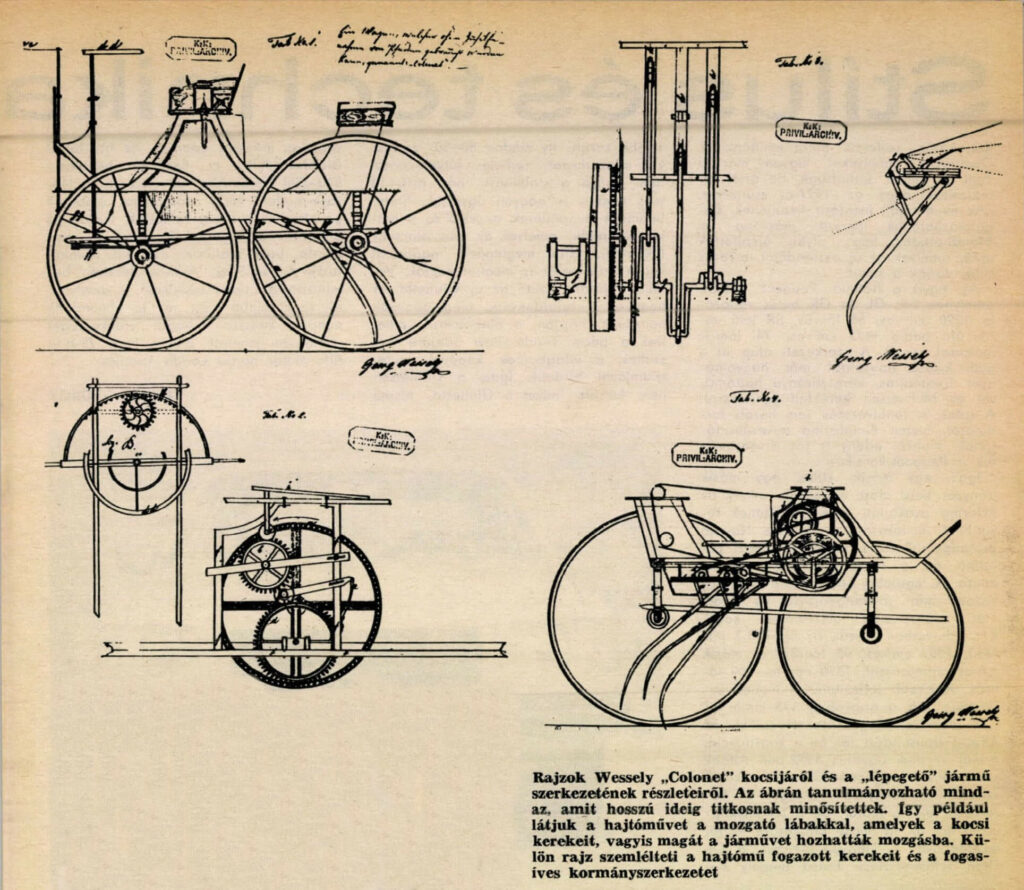
A year later, the Politisches Volksblatt published an article about the inventor, saying that the former Budapest carriage maker György Wessely had created a carriage that moved forward by means of a self-propelled machine and did not even use the wheels.
The Vienna Polytechnic approved the invention after three trials, after the inventor's drawing and the model had been approved, and the Hungarian Ministry patented it. As he writes, the inventor was so impoverished that he had no financial means to sell his invention.
For a long time, the essence of the invention was shrouded in secrecy - which Wessely repeatedly attempted to do because it was classified as secret for military reasons.
We now know from the original submission that Wessely's car was powered by muscle power. As he writes: it is four-wheeled and has three legs, it is designed and intended to be used without horses, it is solidly built and is intended to carry two persons. . . it can be moved by a chain or rope by the person in the back seat pulling the chain or rope towards him'. The force would have been transmitted by an 'auxiliary machine' placed inside the carriage, which would alternately clamp the three legs under the carriage to the ground, thus moving the carriage forward.
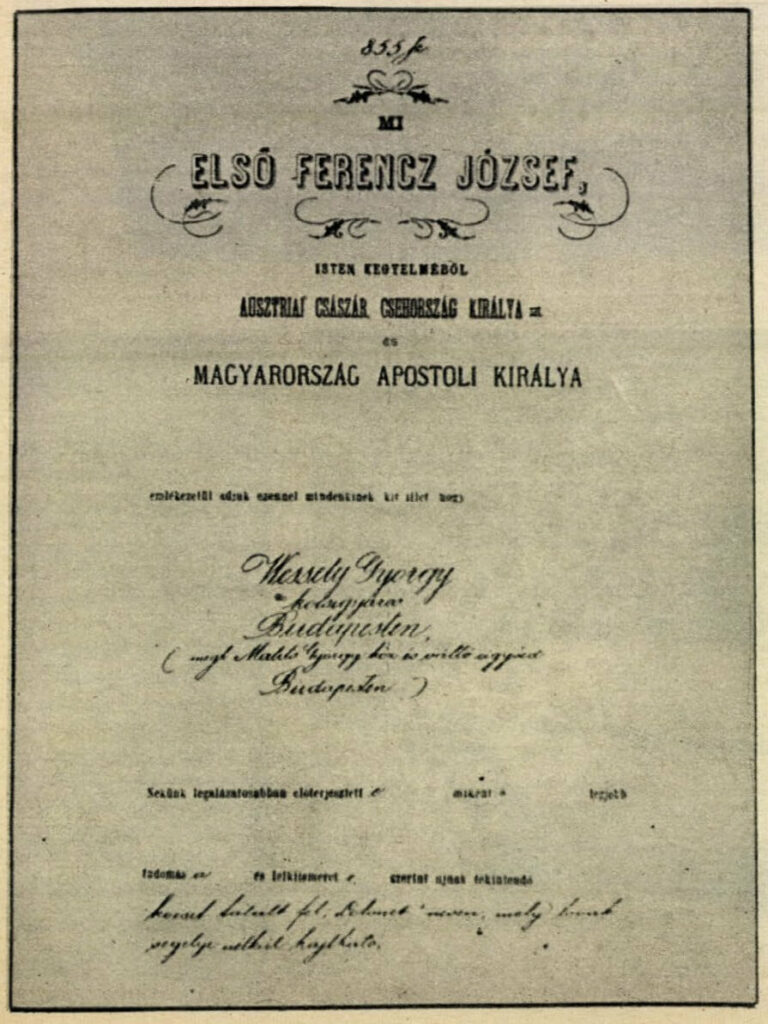
Wessely wrote in vain in his patent: "I declare everything on my carriage to be new, but as my carriage is identical in design and section with all other cars and can take any shape, subject to fashion, the patent is easily circumvented."
This patent specification - Wessely's design - was already fundamentally outdated in the age of steam engines...
Interesting, however, is the document certifying the Wessely patent, a copy of which is presented here. It is mainly the wording, the wording, that makes this paper, numbered 855 and written in the age of steam engines, interesting:
"We, Francis Joseph I, by the grace of God, Emperor of Austria, King of Bohemia, sat. and Apostolic King of Hungary, do hereby remind all who are eligible that George Wessely is a coachman in Budapest, (d. George Malits, public and exchange lawyer in Budapest). He has most humbly presented to us how, to the best of his knowledge and conscience, he has invented a carriage to be considered new, called 》Colonet《, which can be driven without the aid of horses." .
And this marks the end of an era, after which the automobile, the pioneers of car manufacturing in Hungary, will come to the fore. We'll talk about them next.
